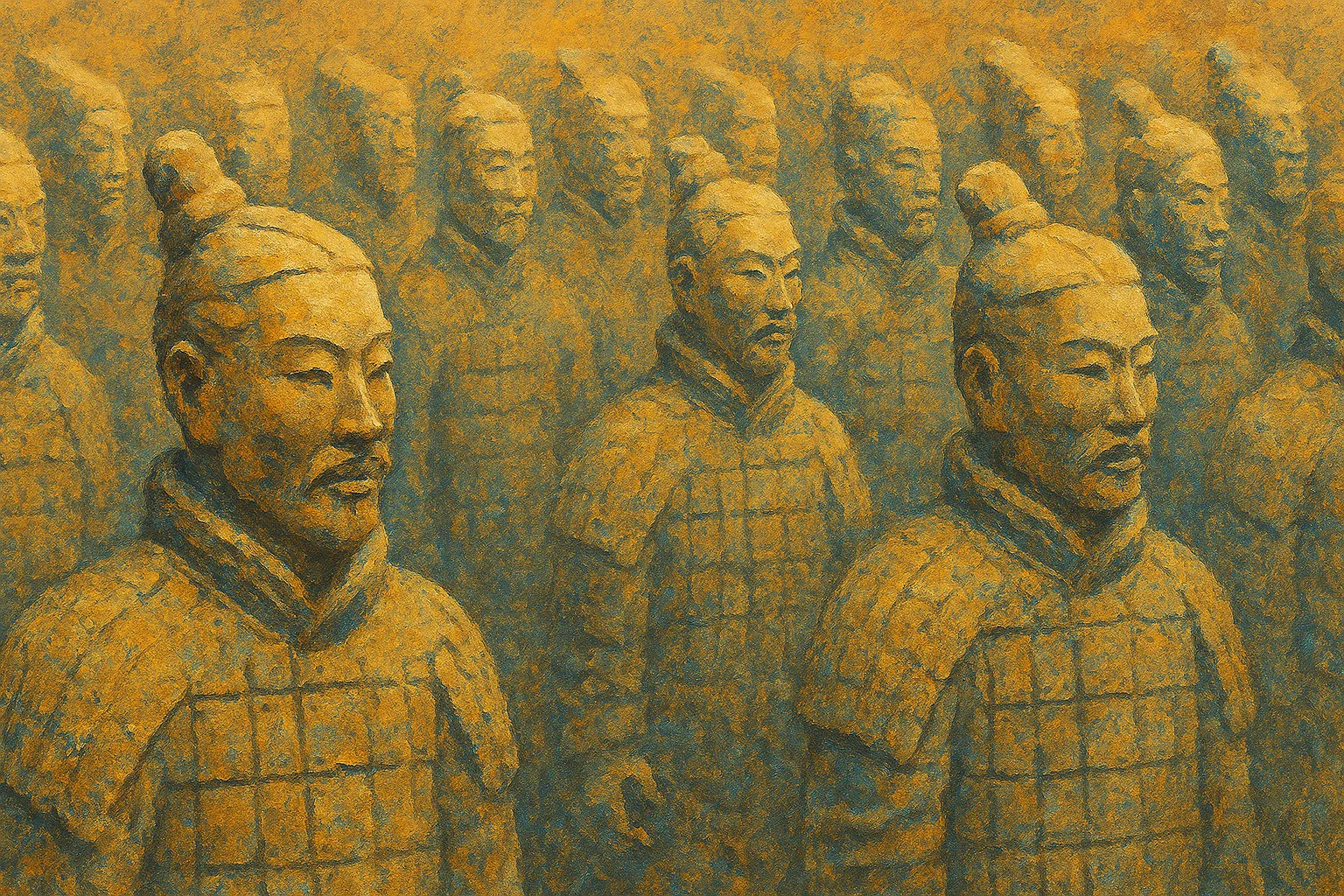UPSC
On This Day Today
Terra-Cotta Warriors: Guardians of China’s First Emperor
Last Updated
29th March, 2025
Date Published
28th March, 2025
Share This Post With Someone

Context:
Published by National Geographic Education on March 29, 1974, this resource details the discovery of the Terra-Cotta Warriors in Xi’an, China, unearthing a vast army of clay soldiers guarding Qin Shi Huang Di’s tomb. As of March 29, 2025, this archaeological marvel offers insights into ancient Chinese history, military organization, and cultural beliefs, making it a significant topic for understanding China’s imperial past.
Key Information Points:
- Discovery Date: On March 29, 1974, local farmers in Xi’an, China, found clay figure fragments while digging a well, leading to the discovery of the Terra-Cotta Warriors.
- Emperor’s Tomb: The warriors guard the burial site of Qin Shi Huang Di, China’s first emperor, who reigned during the Qin Dynasty (221-206 BCE).
- Scale of Find: Over 8,000 life-size clay soldiers, along with horses, chariots, and weapons, were buried in a massive tomb complex, partially excavated to date.
- Historical Context: Qin Shi Huang Di ordered the tomb’s construction, with his unexcavated remains at the core, reflecting his quest for immortality and power.
- Excavation Details: Three pits contain warriors in battle formation, with a fourth pit empty, possibly unfinished at the emperor’s death in 210 BCE.
- Physical Features: Warriors stand about 2 meters (6 feet) tall, weigh up to 272 kg (600 lbs), and feature unique facial expressions, hairstyles, clothing, and poses.
- Artistic Craftsmanship: Initially brightly painted, the clay figures have faded to grey, though traces of color remain, showcasing detailed craftsmanship.
- Military Representation: Includes infantry, archers, charioteers, and cavalry, positioned facing east, the direction of Qin’s historical enemies.
- Weapons Found: Excavations uncovered bronze swords, arrow tips, and other pristine weapons, indicating a well-equipped force for the afterlife.
- Tomb Layout: Warriors stand in trench-like underground corridors, some with clay horses aligned four abreast, followed by wooden chariots.
- Global Exhibitions: Museums worldwide have displayed small groups of warriors, while those in Xi’an remain in their original eastward-facing positions.
- Ancient China’s Legacy: The Qin Dynasty, under Qin Shi Huang, standardized writing, refined ironworking, and built monumental structures like the Terra-Cotta Army.
- Dynastic Contributions: The Zhou Dynasty (1046-256 BCE) advanced culture, while the Ming Dynasty (1368-1644 CE) later fortified the Great Wall, framing China’s rich history.
Key Terms:
- Terra-Cotta Warriors: Life-size clay soldiers buried to protect Qin Shi Huang Di in the afterlife.
- Qin Shi Huang Di: First emperor of China, founder of the Qin Dynasty, who commissioned the tomb.
- Qin Dynasty: Short-lived dynasty (221-206 BCE) that unified China and initiated major projects.
- Xi’an: Modern city near the ancient tomb site, once a key Chinese capital.
- BCE: Before Common Era, dating system used for ancient timelines.
- Archaeological Excavation: Process of uncovering historical artifacts, revealing the warriors.
- Funerary Complex: Elaborate tomb structure reflecting beliefs in the afterlife.
Link To the Original Article – https://education.nationalgeographic.org/resource/terra-cotta-warriors-found/